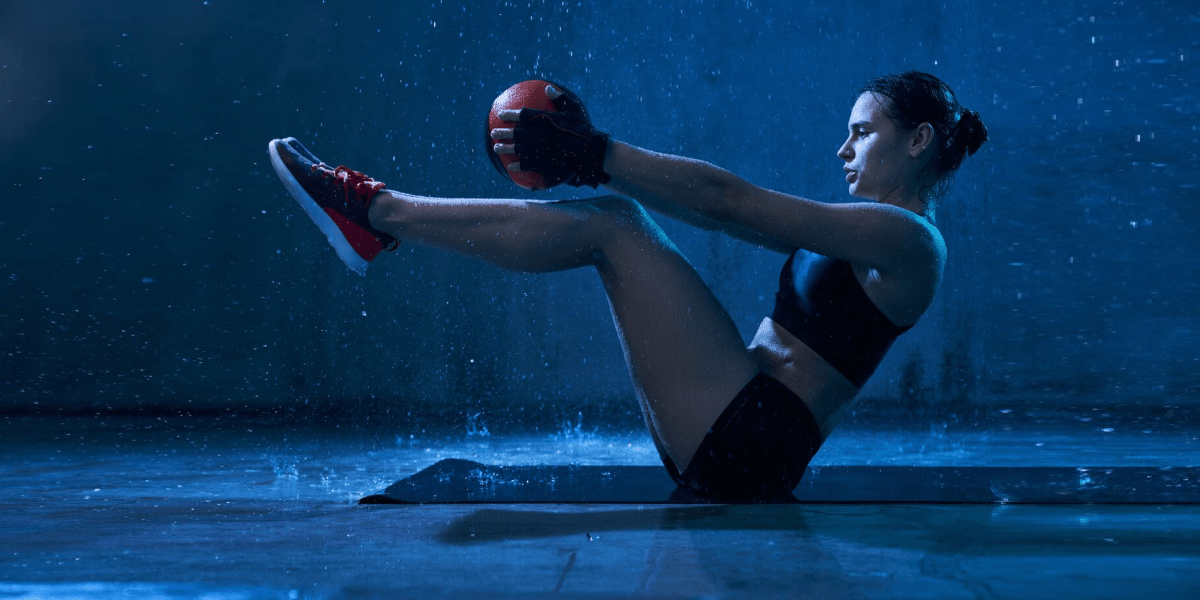Effective Workout for Athletes to Enhance Strength and Performance
A good workout for athletes is crucial. It helps them get stronger, faster, and better at their sports. Different exercises target different parts of the body and skills. Using a variety of workouts for athletes can help them perform their best and stay healthy.
Essential Fitness Training for Athletes
Athletes need to do many types of exercises to be at their best. These include strength training, endurance training, speed and agility drills, flexibility exercises, and high-intensity interval training (HIIT). Each type of workout for athletes helps them in different ways, making them well-rounded and prepared for any challenge.
Strength Training

Strength training is important for building muscles. It involves lifting weights or using resistance bands. This workout for athletes makes their muscles stronger and more powerful. Strong muscles help athletes perform better and prevent injuries.
Endurance Training
Endurance training helps athletes last longer in their activities. It includes exercises like running, swimming, or cycling for long distances. This type of workout for athletes improves their stamina, so they don’t get tired quickly during games or practices.
Speed and Agility Drills

Speed and agility drills help athletes move quickly and change directions fast. These drills include activities like ladder drills, cone drills, and sprints. They improve an athlete’s ability to react and move efficiently, which is important in many sports.
Flexibility and Mobility Exercises

Flexibility and mobility exercises keep athletes' bodies limber and prevent injuries. These exercises include stretching and yoga. They help maintain a good range of motion in the joints, making it easier to perform different movements.
High-Intensity Interval Training (HIIT)
HIIT is a workout where you do short, intense exercises followed by rest or easier exercises. This workout for athletes helps improve speed and endurance. It’s also great for burning fat and building muscle.
Pre-Workout Tips for Athletes
Before starting a workout, athletes need to prepare their bodies properly. This includes staying hydrated, eating the right foods, and doing a good warm-up. These steps help ensure that athletes can perform their best and avoid injuries.
Proper Hydration
Staying hydrated is very important. Drinking water before, during, and after workouts keeps the body functioning well. Dehydration can cause fatigue and poor performance, so athletes should always drink enough water.
Nutritional Strategies

Eating the right foods before a workout gives athletes the energy they need. A good meal includes carbohydrates, proteins, and fats. This type of nutrition helps athletes have the energy and strength for their workouts.
Warm-Up Routines
A proper warm-up before a workout for athletes gets their bodies ready for exercise. It includes light activities like jogging, jumping jacks, and dynamic stretches. Warming up increases blood flow to the muscles and reduces the risk of injury.
Importance of Rest and Recovery for Athletes
Resting is just as important as exercising. It helps your body heal and get stronger. Without proper rest, athletes can become overtrained and get injured.
Muscle Repair and Growth

During rest, muscles repair and grow. This process is essential for athletes to get stronger. Proper nutrition and rest help muscles recover after a workout.
Tips for Proper Recovery After Intense Workouts
Keep Hydrated: Keep drinking lots of water to help your body recover.
Balanced Nutrition: Always have a balanced meal with carbs, healthy-fats, protein, and more. This helps in muscle repair.
Proper Sleep: Get enough sleep to allow your body to repair and grow.
Stretching: Gentle stretching can help muscles relax and recover.
Massage: A massage can help reduce muscle soreness.
Rest Days: Take days off from intense workouts to let your body recover.
Monitor Overtraining: Pay attention to signs of overtraining, like fatigue and muscle soreness.
Active Recovery Exercises for Rest Days
On rest days, athletes can do light activities to keep their bodies moving without intense exertion. This includes walking, swimming, or gentle yoga. These activities help improve blood flow and aid in recovery.
Conclusion
A good workout for athletes includes many types of exercises. Strength training, endurance training, speed and agility drills, flexibility exercises, and HIIT all help athletes become better at their sports. Pre-workout tips like proper hydration, good nutrition, and warm-up routines are important for peak performance. Following these tips and incorporating various workouts can help athletes stay strong, healthy, and ready to perform their best.
FAQs
Q1) What is the best type of workout for athletes to improve overall performance?
A balanced workout for athletes should include strength training, endurance training, speed and agility drills, flexibility exercises, and high-intensity interval training (HIIT). Each of these components helps improve different aspects of athletic performance, making athletes well-rounded and prepared for various challenges.
Q2) How often should a workout for athletes include strength training?
Athletes should incorporate strength training into their workout routines at least 2-3 times a week. This type of workout for athletes helps build muscle strength and power, which are essential for enhanced performance and injury prevention.
Q3) What are some effective endurance exercises in a workout for athletes?
Effective endurance exercises in a workout for athletes include long-distance running, swimming, and cycling. These activities help improve stamina and cardiovascular health, allowing athletes to sustain high levels of activity during games and practices.
Q4) How can flexibility exercises be integrated into a workout for athletes?
Flexibility exercises can be integrated into a workout for athletes through regular stretching routines and yoga sessions. These exercises help maintain a good range of motion, prevent injuries, and improve overall athletic performance. Athletes should aim to include flexibility training in their routines at least 2-3 times per week.










Leave a comment
This site is protected by hCaptcha and the hCaptcha Privacy Policy and Terms of Service apply.